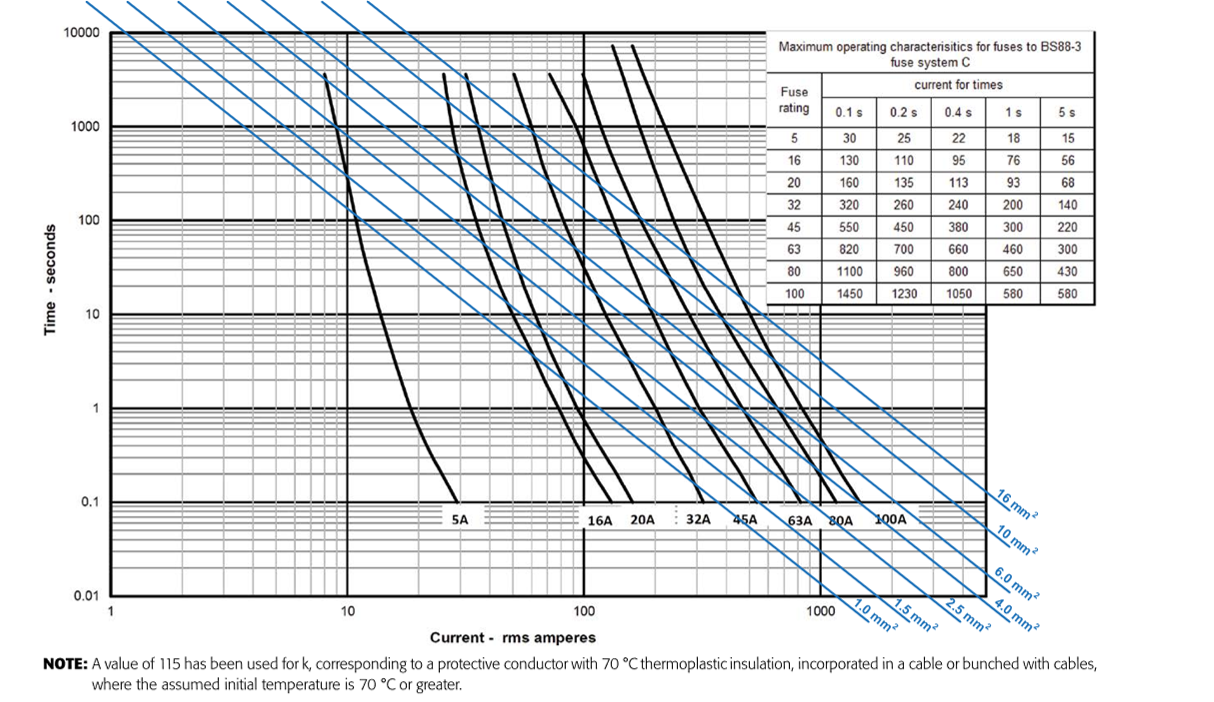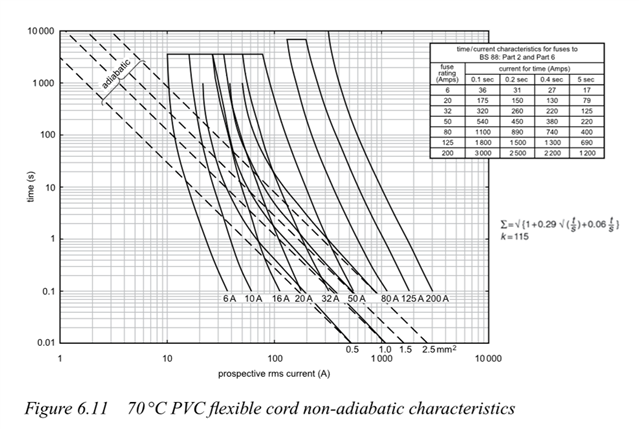The following copper conductors are plotted in the IET Design Guide;

From these, maximum loop impedances have been calculated;

Whilst this is done for a 1mm2 conductor, values can be calculated for other sizes. Surely the adiabatic formula from which the plots have been extrapolated are really only relevant for disconnection times not exceeding 5s. So to say that the maximum loop impedance for a 1mm2 conductor protected by a 5A fuse is 20 ohms is clearly incorrect.
Similarly, a 16mm2 conductor could carry 32A all day long but according to the plot, a 20A fuse would have a maximum loop impedance of 6.8 ohms.
